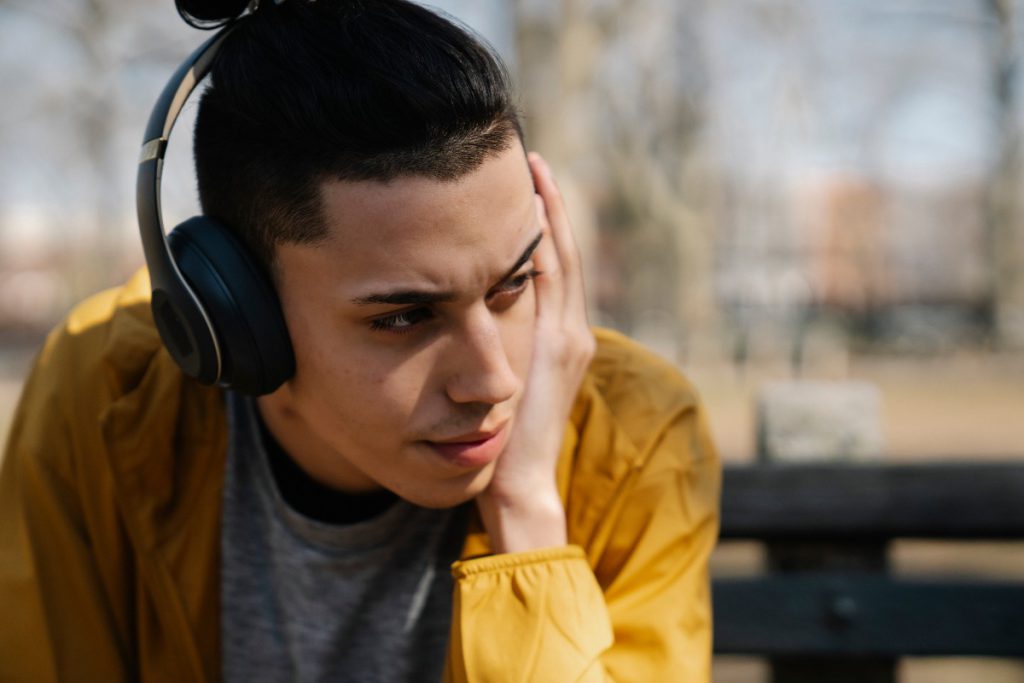
The adolescent years are difficult enough for the typical teen, but for those with a sensory processing disorder (SPD), they can be literally overwhelming. Learning strategies to address issues like auditory flooding, mono-channel processing, and synesthesia can greatly help your teen clients.
How Do Sensory Processing Disorders Affect Adolescents?
When the brain receives sensory input and the corresponding motor and behavioral responses are not typical or appropriate, it is known as having an SPD. For adolescents, this can be particularly distressing because their need for social acceptance is crucial to their emotional well-being at this stage of their lives. Having an SPD can also be incredibly confusing, causing teens to isolate themselves as a result.
Sometimes, the sensory input is simply overwhelming and causes teens to shut down, which can be confusing for others around them. Helping teens learn about their SPDs and understand strategies for coping can help them be more successful now in their educational pursuits, as well as later on throughout their lives.
What Is It Like to Experience Auditory Flooding?
Auditory flooding is a form of sensory overload involving sound. The person becomes overwhelmed by specific sounds like sirens, traffic, shouting, or loud music. The individual can also just become generally overwhelmed by sounds in their environment. Reactions may be anything from distraction or withdrawal to distress symptoms like fight-or-flight response or becoming severely irritable and angry.
This type of SPD can be particularly embarrassing for teens when they want to go to a party or an athletic event where there are loud, potentially triggering sounds. Trying to fit in when your auditory senses are so easily overwhelmed can be very difficult.
How Mono-Channel Processing Affects Adolescents
Adolescents with mono-channel processing are very literally only able to process one sense at a time. For example, if you want them to hear what you are saying, they cannot also look at you; they cannot process visual and auditory input simultaneously.
While their processing of each sense works well enough, mono-channel processing is increasingly difficult in a world where teens are often presented with multimedia information. For example, in school, they may get into trouble with an instructor if they do not make eye contact. They may also be expected to watch a visual presentation and be responsible for the auditory information that is being presented at the same time. Socially, they may struggle to interact with videos or movies, video games, and other audiovisual stimuli and may be teased or bullied for not being able to process information from more than one sense simultaneously.
How Do Teens Experience Synesthesia?
The phenomenon of synesthesia has been documented for hundreds of years but has only recently begun to be truly studied. Synesthesia is an experience where the property of one stimulus, such as color, evokes the property of another stimulus, such as music or sound. Interestingly, one study found that some forms of synesthesia are more common in those with autism spectrum disorder (ASD). Teens might describe how something tastes by using colors or other visual descriptions or may see colors when they listen to music.
While many people find those with synesthesia very interesting, it can be frustrating for teens not to be able to process stimuli in a typical way. When asked to describe things for others in class, for example, they may be ridiculed or even questioned by an instructor when they describe how they process the input they receive.
Developing Strategies for Adolescents With SPDs
The struggle for adults who work with adolescents with SPDs is to help them develop coping strategies for real-world interactions that allow them to function in spite of their sensory processing challenges. For example, a teen who experiences auditory flooding may need to keep earplugs and/or headphones with them to prevent becoming overwhelmed by the sounds around them.
Someone with mono-channel processing may request an accommodation in school to be able to have information presented in a single media format. They might need to view multimedia presentations multiple times to process each sense individually.
On the other hand, a teen who experiences synesthesia may be able to use their processing differences to their advantage. For example, they could offer alternative descriptions of sensory experiences, allowing others to have insights into different ways that the brain can receive and process information.
While having SPDs can be frustrating and overwhelming, addressing each adolescent and their sensory processing experiences as unique individuals will be helpful. In doing so, teens can develop individual strategies that work for them and their situations.
Developing strategies for dealing with sensory processing disorders (SPDs) is crucial for adolescents. Whether they are experiencing something like auditory flooding, mono-channel processing, or synesthesia, teens need real-world strategies to prevent them from being overwhelmed in their day-to-day lives. Developing unique strategies that take into account the SPDs of each individual adolescent helps them to feel understood. They will be able to survive in a world that can seem overwhelming to them. Sustain Recovery in Irvine, California, helps teens with addiction and mental health diagnoses, including those with SPDs. We understand that the behaviors are not the problem. We help adolescents seek real solutions to the underlying problems that make them seek substances. Our program is an extended residential program that helps teens transition back to their lives properly and increases their chances of a successful recovery. Call us today at (949) 407-9052.






